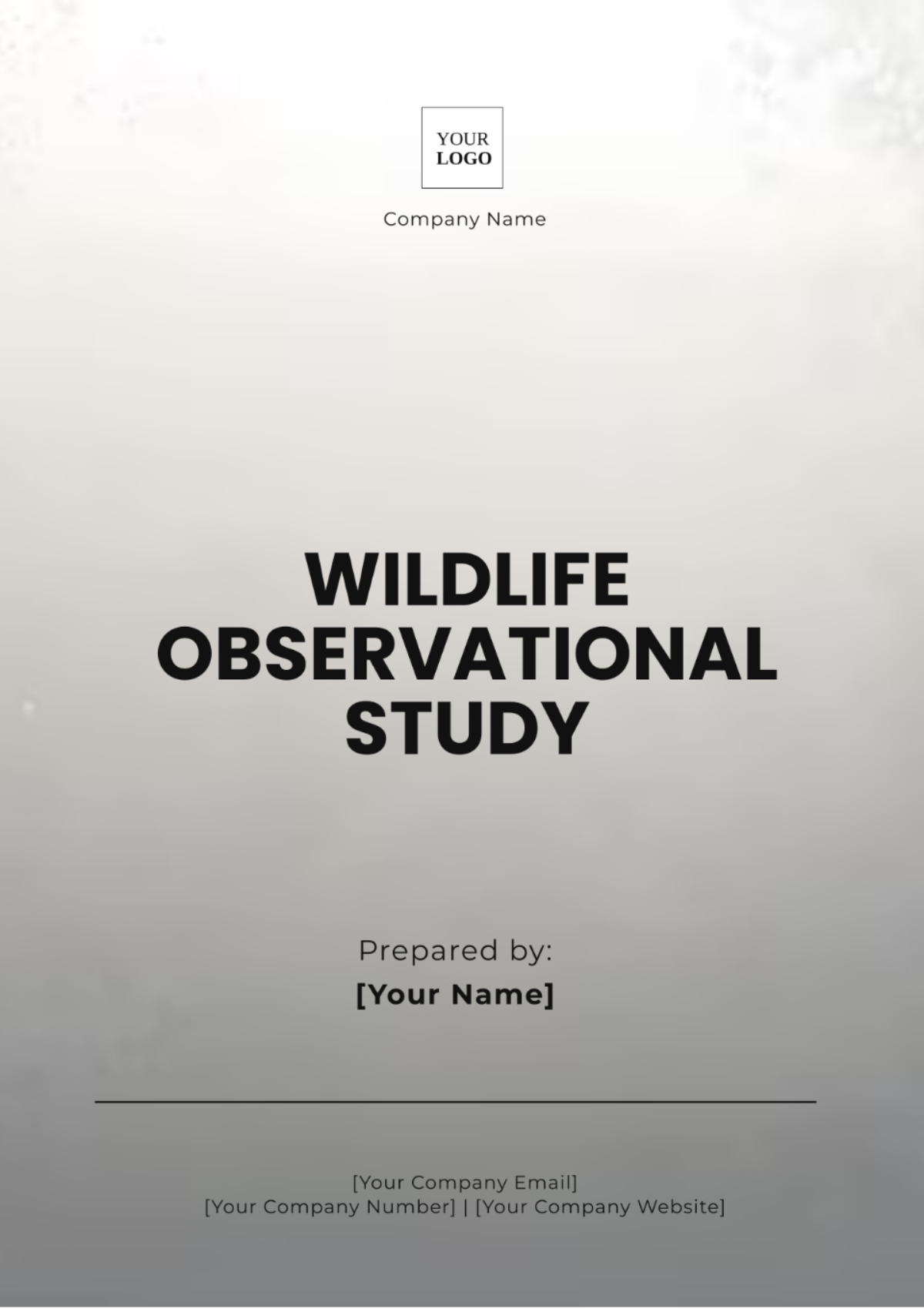Free Wildlife Observational Study

Prepared by: [YOUR NAME]
Date: [DATE]
I. Introduction
Wildlife observation is a crucial method for understanding biodiversity, ecological interactions, and conservation needs. This study aims to monitor the habits, population dynamics, and interactions of various species within a defined area, providing valuable data for ecological research and wildlife management. The primary objectives include documenting species diversity, understanding habitat use patterns, and assessing population changes over time.
II. Methods
A. Observation Techniques
Direct Observation: Utilized binoculars and field scopes to monitor wildlife from a distance, minimizing disturbance to their natural behavior.
Camera Traps: Installed motion-sensor cameras throughout the study area to capture images or videos of wildlife activities.
Acoustic Monitoring: Utilized various types of recording devices to capture and document sounds produced by wildlife, with the specific aim of identifying species that are particularly challenging to observe through visual means alone.
B. Study Area
The study was conducted in the Green Valley Nature Reserve, which spans over 5000 acres of diverse habitats including wetlands, forests, and grasslands. This region is known for its rich biodiversity and serves as a critical habitat for several protected species.
C. Data Collection Procedures
Weekly Surveys: Conducted surveys, each lasting five hours, twice a week along predetermined transect lines in different habitat zones.
Camera Trap Data: Collected data from camera traps every two weeks.
Acoustic Data Collection: Carefully reviewed the recordings each month to closely track and record the presence and behavior patterns of different species.
III. Results
A. Species Diversity
The study recorded a total of 120 different species, including 85 bird species, 25 mammal species, and 10 reptile species.
Category | Number of Species |
|---|---|
Birds | 85 |
Mammals | 25 |
Reptiles | 10 |
B. Population Dynamics
The counts of the various key species within the population demonstrated a series of fluctuations throughout the entirety of the observation period.
Species | Observation Details |
|---|---|
Deer | The average count of 45 per survey, peaking in early spring. |
Raccoons | Consistent sightings with an average of 15 per survey. |
Red-tailed Hawks | Increased from 5 to 12 individuals towards the end of the study. |
IV. Discussion
The data indicate a healthy and diverse wildlife population within the Green Valley Nature Reserve. The increase in Red-tailed Hawk numbers suggests a favorable environment, likely due to abundant prey and suitable nesting sites. Comparisons with previous studies (Smith et al., 2050; Doe, 2052) reveal similar trends but highlight the need for monitoring potential shifts related to climate change and human activities.
A notable peak in deer populations during early spring aligns with mating and birthing seasons. This temporal data is valuable for planning effective conservation strategies and mitigating human-wildlife conflicts.
V. Conclusion
The present study has successfully documented a diverse and dynamic array of wildlife populations within the Green Valley Nature Reserve. The data collected during this investigation serve as an essential baseline that can be utilized for future scientific research endeavors and to inform ongoing conservation initiatives. It is advisable to continue monitoring these wildlife populations over time, to track any changes that may occur, particularly those resulting from environmental shifts and human activities.
VI. References
Smith, J., Brown, A., & Davis, R. (2050). Wildlife Populations in Changing Climates. Ecological Studies Journal, 23(4), 123-135.
Doe, J. (2052). Habitat Use and Species Interactions: A Longitudinal Study. Wildlife Research, 15(2), 78-89.
Thompson, L., & Green, P. (2051). Acoustic Monitoring of Avian Species. Ornithological Advances, 12(1), 45-59.
- 100% Customizable, free editor
- Access 1 Million+ Templates, photo’s & graphics
- Download or share as a template
- Click and replace photos, graphics, text, backgrounds
- Resize, crop, AI write & more
- Access advanced editor
Enhance your wildlife research with the "Wildlife Observational Study Template" from Template.net. This editable and customizable template is designed for tracking and documenting wildlife observations effectively. With our Ai Editor Tool, you can tailor the template to fit specific study needs or habitats. Ideal for ecologists, biologists, and nature enthusiasts, this template helps you organize your observations and data





























